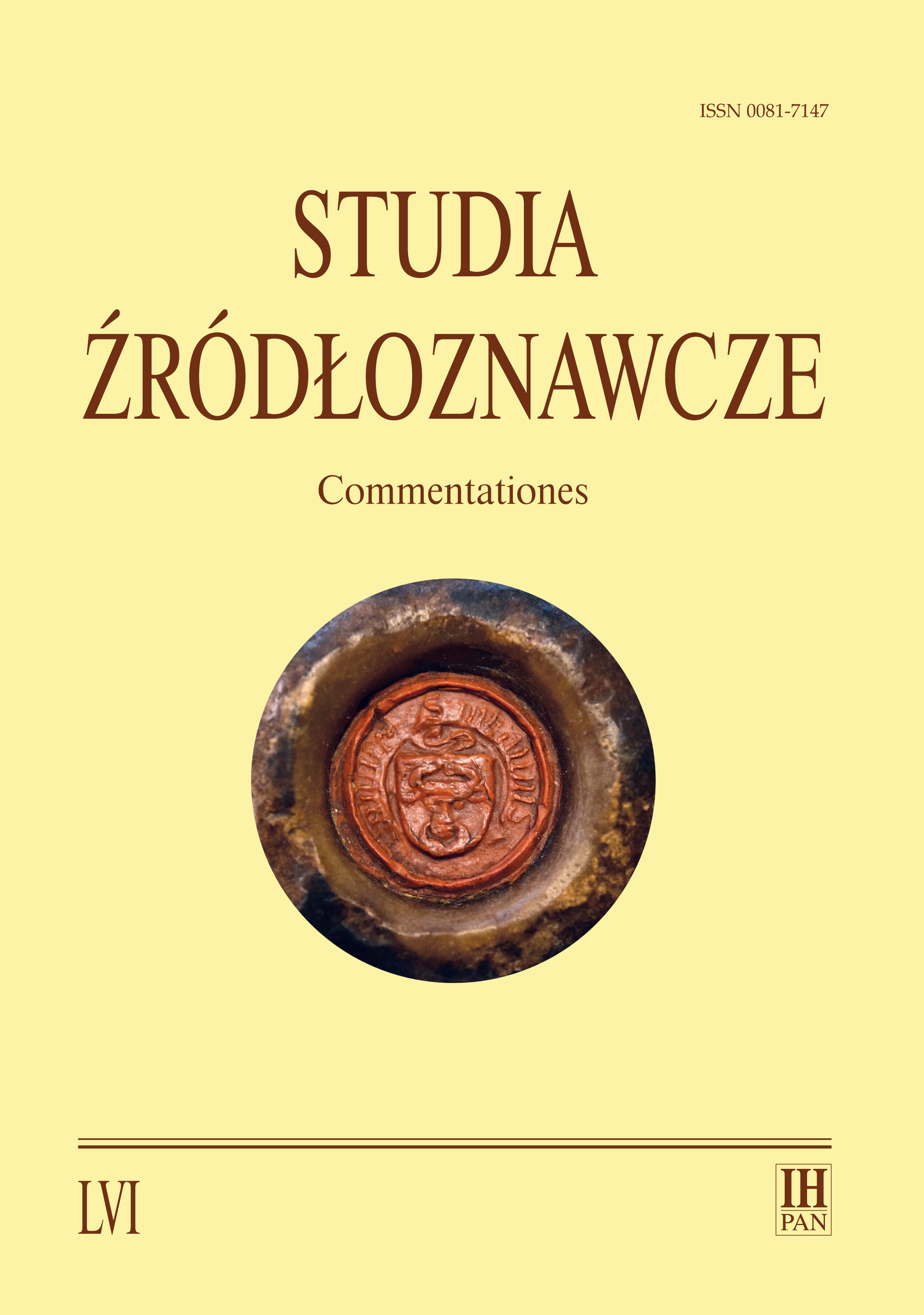Trzy pieczęcie Jana Długosza
Three seals of Jan Długosz
Author(s): Ewa KozaczkiewiczSubject(s): History, Cultural history, Diplomatic history, Middle Ages, 15th Century
Published by: Instytut Historii im. Tadeusza Manteuffla Polskiej Akademii Nauk
Keywords: John Długosz’s seals; canons’ seals; ecclesiastical sigillography; armorial seals; John Długosz’s documents
Summary/Abstract: This article deals with three seals of John Długosz, discovered in the Biblioteca del Convento di San Giovanni da Capestrano in Capestrano (two imprints), the Central Archives of Historical Records in Warsaw, the National Archives in Cracow and the archives of the St. Andrew monastery of the St. Clara order in Cracow. The aim of the sigillographic analysis, performed in the article, was to present the seals of John Długosz in reference to the sigillographic practices of the canonical environment in order to learn more about him. The results show that those seals, in terms of the iconographical and verbal content, as well as the size and the shape, fit in the conventions of the 15th-century cathedral clergy. All three seals were armorial seals presenting a Wieniawa coat of arms. Inscriptions on all of them started with the initial S and the name of the owner. The remaining part of the inscription of the first seal is not legible, whereas the further part of the inscription of the second and the third seal contained the owner’s last name. Moreover, the inscription of the second seal consisted only of initials. The type of script was gotic minuscule. The first and the second seal was octagonal, the third one was round. They were relatively small (15 x 13 mm, 14 x 12 mm, 20 mm). The artistic value of the engraving was average. The seals carried resemblance not only to the seals of other canons but also to the seals of noblemen of that time.The majority of the imprints were made in the red wax. They served to validate documents (1469, 1479) and to close letters (1454, 1455, 1476). Because we do not have enough evidence, it is difficult to find patterns of their usage, however it seems that there was no differentiation and their usage was due to practical needs.
Journal: Studia Źródłoznawcze. Commentationes
- Issue Year: 2018
- Issue No: 56
- Page Range: 119-136
- Page Count: 18
- Language: Polish

